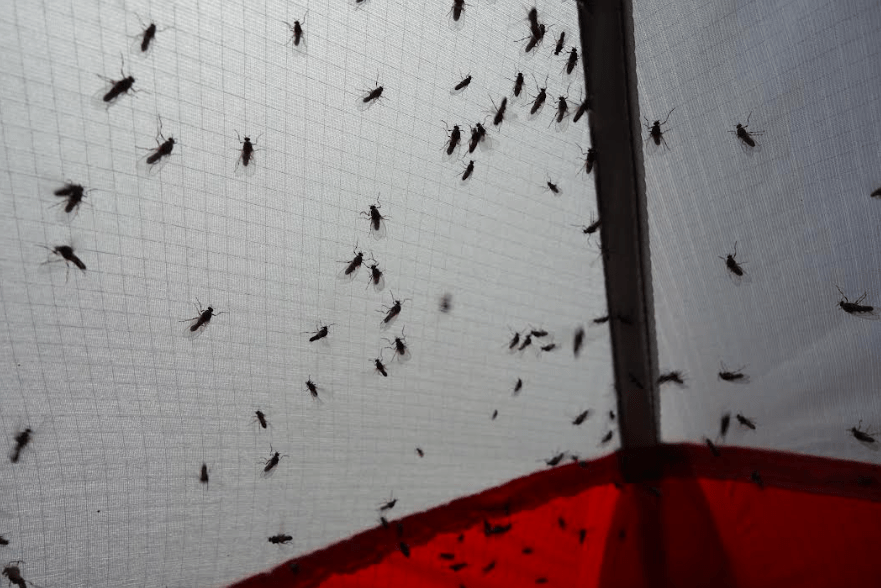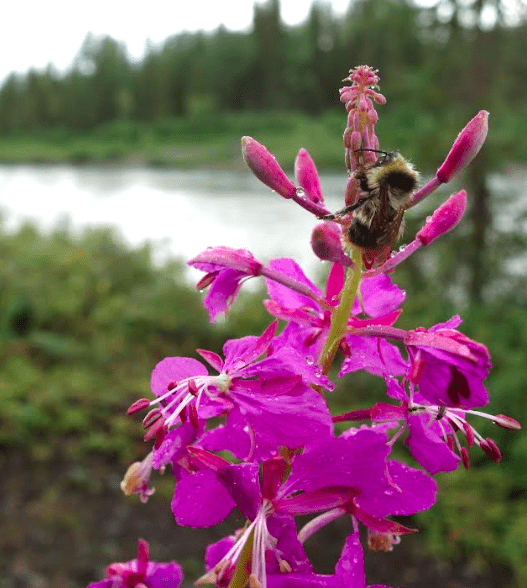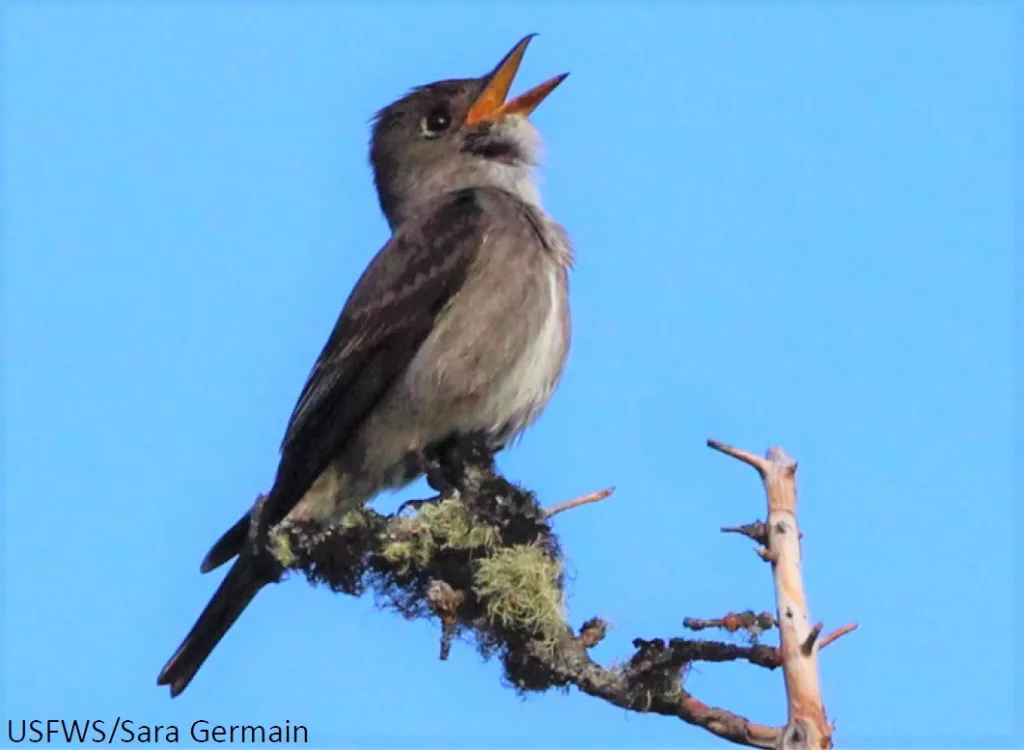Story by Ned Rozell

Insects like these flies clinging to a tent seem to be in ample supply in Alaska’s boreal forest. Photo by Ned Rozell.
Recent long-term studies revealed a three-quarters reduction of insects in parts of Germany and an 80 percent decline of pollinating flies at a field site in Greenland.
What’s going on with numbers of Alaska insects?
Two scientists recently completed a study on the abundance and variety of insects in the spruce forests of Alaska. If the study is duplicated in the future, researchers will be able to see whether Alaska is changing and how it compares to what is happening elsewhere on the planet.
“There are lots of disturbing reports coming from a lot of places,” said Derek Sikes, curator of the Insect Collection at the University of Alaska Museum of the North in Fairbanks.
Sikes is co-author of a new study of insects sampled in three areas of Alaska’s boreal forest. Blanketing land masses of the north from Alaska to the easternmost provinces in Canada, the boreal forest also covers parts of Scandinavia, Russia and Asia.

Insects like this bee clinging to a fireweed blossom seem to be in ample supply in Alaska’s boreal forest. Photo by Ned Rozell.
Sikes teamed up with Julie Hagelin of the Alaska Department of Fish and Game in Fairbanks on the study.
Hagelin is researching the olive-sided flycatcher, a songbird that winters as far as South America and flies north to Alaska each summer to nest and raise chicks.
Olive-sided flycatchers — birds with a 78 percent drop in global population since 1970 — eat flying insects like dragonflies, yellowjackets, butterflies and mayflies. Coming and going from a prominent perch like the top of a dead tree, they zoom about to pluck everything they eat from the air.
As part of her study, Hagelin sampled flying insects to see what flycatchers might eat. Her study sites were in Anchorage, Fairbanks and the Tetlin National Wildlife Refuge near Tok. During three recent years, she, Sikes and their colleagues retrieved more than 115,000 insect specimens from tent-like traps suspended in trees and others on the ground.

Birds like this singing olive-sided flycatcher are dependent upon the many insects now buzzing over and on Alaska. Photo by Sara Germain.
Sikes and students at the UA Museum of the North identified those insects and the timing with which they were available to birds. Overall, they found a strong midsummer pulse of insect biomass driven in part by temperature (warmer meant more insects). They also found 49 new state beetle records and 10 beetles not only new to Alaska but “new to the universe.”
Those discoveries add to a long list of species Sikes has documented in Alaska. He has been everywhere from the Aleutians to the North Slope to Southeast in his 18 years as the lead entomologist at the museum. Working with Hagelin allowed him a detailed look into the boreal forest in which Fairbanks sits.
“This was my first deep dive into the insect fauna of my backyard,” he said.
In identifying all those boreal-forest insects, Sikes found that moths were the most numerous type of insect in Fairbanks and Tetlin, while flies were the most numerous type around Anchorage.
In analyzing those thousands of insects — which altogether weighed about as much as an iPhone — Sikes and Hagelin found that Alaska’s boreal forest is rich in insect life.
Besides their ability to feed birds, why should anyone care about insects?
“Insects are like a glue that holds ecosystems together,” Sikes said.
Insects flit from plant to plant carrying pollen grains on their bodies, spreading reproductive material and enabling new plants. Those plants are food sources for us and creatures that we eat.
Alaska has abundant space for those uncounted billions of insects, with fewer miles of road than Vermont.
“Unlike the problems we see in the Lower 48 with habitat fragmentation, degradation and bird decline, we have intact ecosystems and thriving populations here,” Hagelin said.
“Alaska’s almost 200 years behind the Lower 48 and the Tropics in regards to (habitat) degradation,” Sikes said




